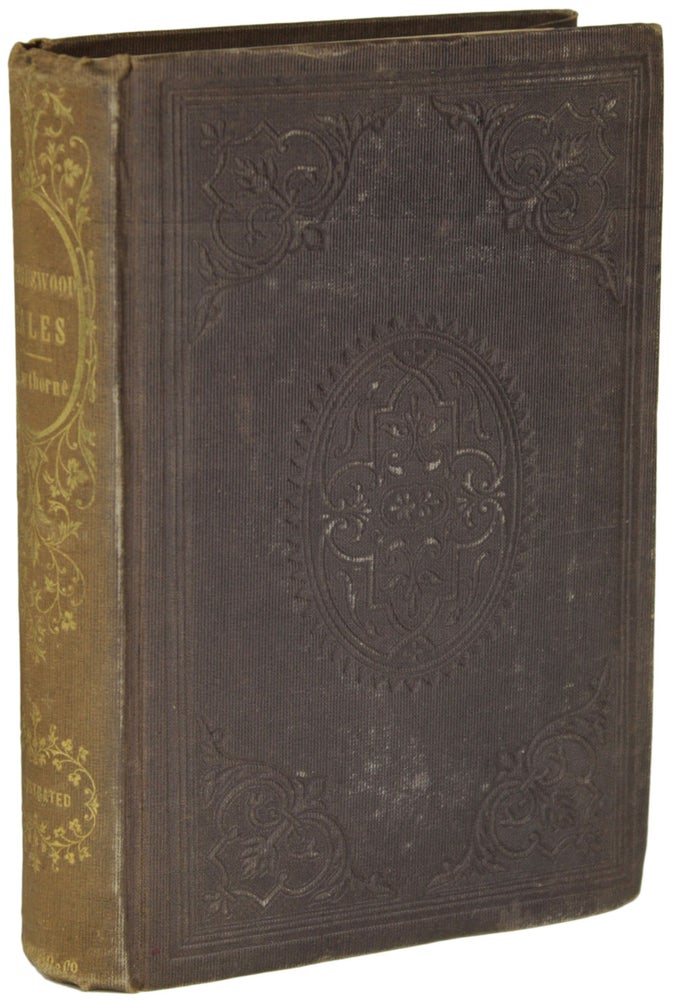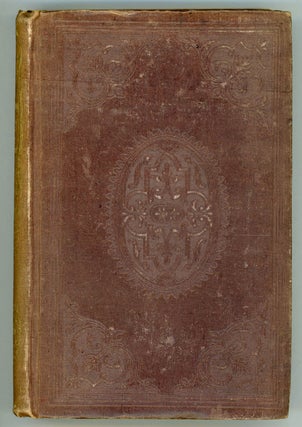TANGLEWOOD TALES, FOR GIRLS AND BOYS: BEING A SECOND WONDER-BOOK. Boston: Ticknor, Reed, and Fields, 1853. Octavo, pp. [1-4] 5 [6] 7-336 [note: first leaf is a blank] + 8-page publisher's catalogue dated "August, 1853" inserted at front, flyleaves at front and rear, engraved title and six inserted plates, original decorated brown cloth, front and rear panels stamped in blind, spine panel stamped in gold, yellow endpapers. First U.S. edition. 3000 copies printed. A sequel to A WONDER BOOK (1851), retelling Greek myths, including "The Minotaur," "The Pygmies," "The Dragon's Teeth," "Circe's Palace," "The Pomegranate Seeds," and "The Golden Fleece." "There is something a little surprising at first glance about Hawthorne, the grim examiner of New England souls, spinning stories for children, but he was, by all accounts, a devoted husband and father, and this book, as well as its predecessor, testify to the softening influence that domestic life apparently had on him. The other ostensible surprise is that Hawthorne, one of the first major American writers to mine his native soil for literary material, should turn back to classical sources here, but he uses them as raw materials only, bringing his own personal and national sensibility to bear on them, freely changing settings, characters, events and -- most importantly -- tone. This technique, as Attebery points out (The Fantasy Tradition in American Literature, p. 62), 'creates a fairyland which is neither Greece nor America, but linked to both: a meeting place of the modern and the magical.' Hawthorne broke with the didactic fashion of children's literature, using motifs and methods of the fairy tale, then a controversial genre. He 'led the way for a great many American children's writers in the nineteenth century. Largely from his innovations, a tradition grew up of fairy tales that were not absolutely original or genuinely American, but not entirely derivative either' (ibid., p. 63). One might add that openly linking oneself to older sources is itself a deeply embedded aspect of the fairy tale in both its oral and written forms." - Robert Eldridge. Attebery, The Fantasy Tradition in American Literature, pp. 60-3. Peter Parley to Penrod, p. 10. BAL 7614 (noted printing 1; catalogue B). Clark A22.2a. Just a bit of rubbing to cloth at spine ends, spine panel just a bit sunned, a bright, clean, better than very good copy. (#154554).
Price: $1,500.00
No statement of printing.



